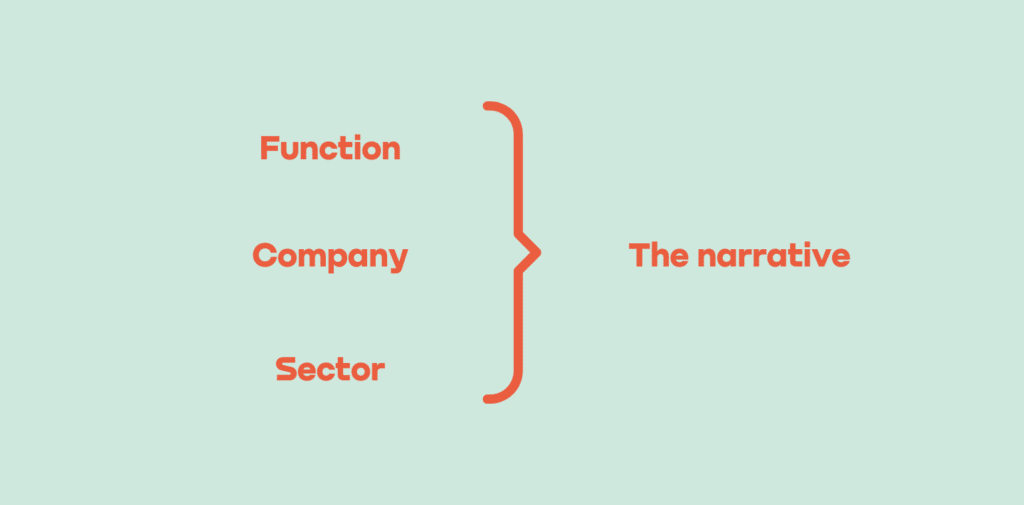In our previous article we mentioned that meaning is a very personal matter. And that in order to arrive at that meaning, you do not start from the “why-question” but from the “who-am-I-question”. In other words, meaning has everything to do with identity.
Since finding meaning in your job has a different interpretation for each person, it seems particularly difficult for an employer to play a role in this. But nothing is less true. In this article, we explain how you can already make a world of difference for your employees thanks to 3 simple steps.
Step 1: Identification with the company and activity.
We previously stated: meaning has everything to do with identity. With a congruence between your employee’s and your company’s identity. In other words: to what extent can I identify myself as an individual with the function, company or sector in which I work?
- The function: To make it easier for your employees to identify with their function, it is important not to reduce it only to the tasks that someone takes on every day. It is much more about: what role do you as an individual play in the overall radar work that the organization is today? And how does your function ensure that customers, colleagues or other stakeholders ‘feel good’. It helps to let people experience what their role contributes to the product or service that your company ultimately delivers. And what it would mean if that contribution were not there.
- The company: Letting your employees identify with the company naturally starts with focusing on your corporate identity. Because what else can they connect with? And by corporate identity we primarily mean the narrative: who is the company, where do we come from, where are we going together, why do we do what we do and so on. Making your company story tangible also means visualizing your culture: who are we as a group and what are our habits, rituals and values/norms? Focusing on your company values is a good start, because they form the compass that gives direction to your employees. Moreover, they are the basic input for developing an employer brand.
- The sector: Just like identifying with the function or the company -to a lesser extent perhaps- identification with the sector in which you work is important. We already indicated that it is easier for people who work in the healthcare or environmental sector to see what contribution they make to society. But the sector of your company also has an impact on the lives of countless people. Whether you build homes in which people experience their family happiness or whether your company makes composite tablets. The products you deliver have an impact on the world.

Step 2: Insight into your human capital.
Insight into who your employees are and what drives them is crucial. But not just for you: primarily for themselves. Because in today’s busy life, people sometimes pass themselves by without asking themselves the question: what is actually important to me?
Therefore, map out their career drivers together with them. So that not only you but also they find direction in what they need to feel good in their job or in your organization.
Only in this way a dialogue can arise that leads to a sense of meaning and ultimately job crafting and a higher retention rate.
Step 3: Repeat, repeat, repeat.
Giving meaning is a verb: literally and figuratively. Once you have a clear view on the above steps, it is important to let them live in the workplace and to repeat them at the appropriate times. Because we don’t live in a vacuum and the world doesn’t stand still. Storytelling about the identification mechanisms should be a recurring phenomenon.
Under the impulse of external circumstances or over the years, both your organization and your employees change. This means that career drivers also have to be re-examined on a regular basis.
Start today.
Everything starts with mapping your human capital and their career drivers. Let myCareerCompanion help you with that. How? We are happy to tell you.